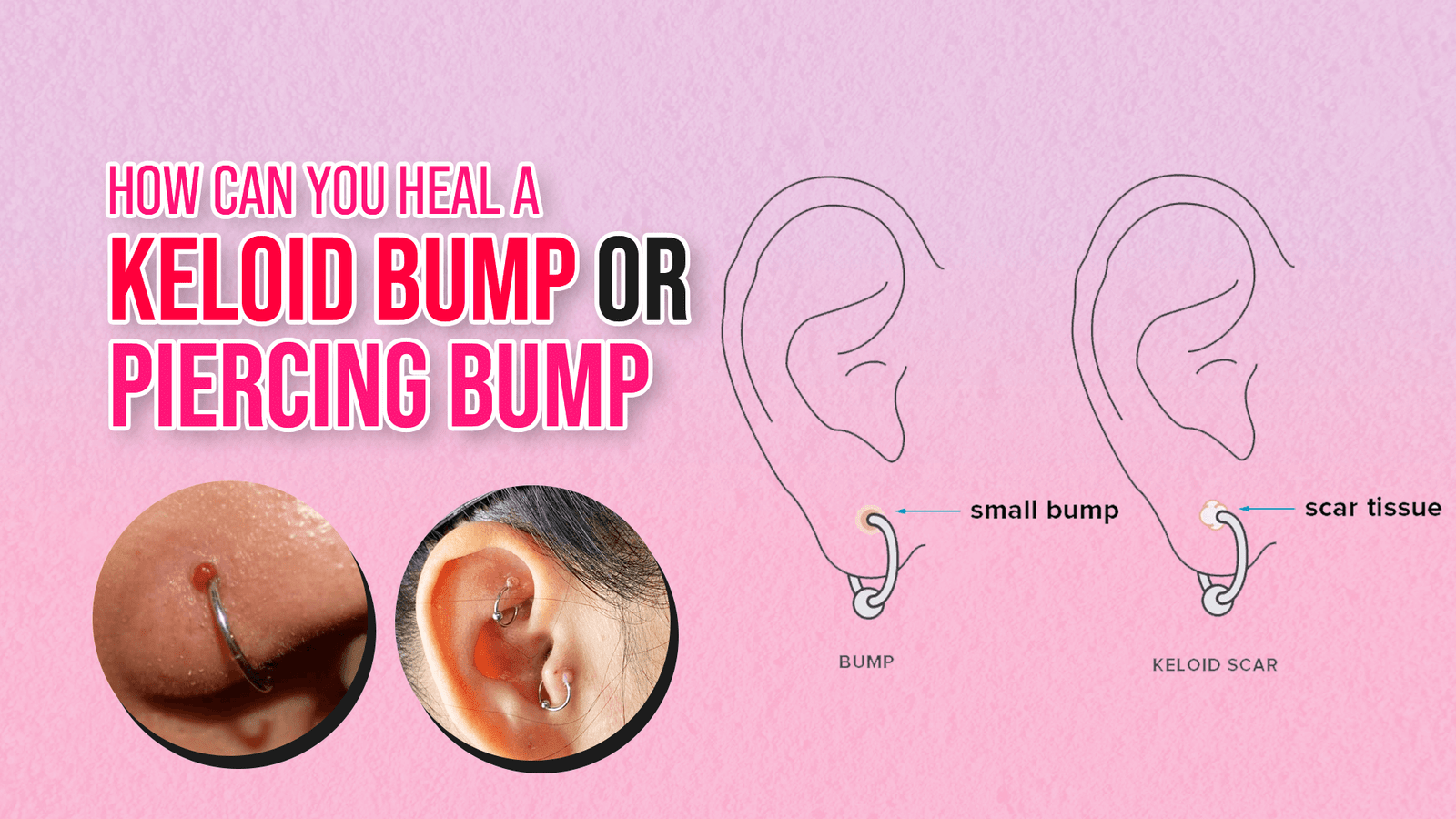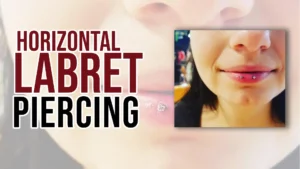Skin alterations are possible where there are piercings. These appearances don’t always signal cause for alarm. For example, piercing bumps are important and might disappear with time. Keloid bumps, however, have the ability to grow further.
We define piercing bumps and keloids in this post and show how to differentiate between them. We go over both of their possible treatments as well as any other conditions that can result in skin problems after having a piercing.
What are Piercing bumps?
Little lumps, known as piercing bumps, may develop following a piercing. These frequently happen after cartilage piercings like higher ear or nose piercings.
When the body’s immune system gets used to the wound and starts the healing process, piercing bumps develop. However, the bump is brought on by the irritation that results from this reaction.
In the first few weeks following a piercing, a person could have bleeding, bruise, and some swelling there. All of these symptoms are typical. Some symptoms that are more likely to be significant include:
- Crusting around the piercing jewelry
- Itching
- Some yellowish fluid escaping from the incision site
What are keloid Bumps?
A keloid is a scar that develops after skin damage or injury. This kind of scar can often develop following a piercing.
An excess of fibrous tissue results in the formation of keloid. A keloid develops when cells in the skin, known as fibroblasts, make an excessive amount of collagen in reaction to injury.
It can take keloids 4 to 8 months to form after the first damage. Raised scars that can be pink, red, purple, or brown at first but eventually get darker are how they usually present themselves. The position of the keloid and the user’s skin tone can both affect how it appears.
Initial keloid scars are often round or oval in shape. They have the potential to expand significantly over time, either swiftly or slowly.
When to Consult with a doctor?
A person should consult a physician or dermatologist if they believe they have a keloid. If a person exhibits signs of a disease, they should also seek medical care.
Treatment for piercing bumps
In most instances, piercing bumps are caused by the body’s normal healing process after an injury. People can, however, take precautions to keep the area clean, stave off infection, and let the piercing heal. This would include patting the area dry with a clean, soft cloth after bathing or showering and preventing using just a towel, which can bring bacteria.
- Other recommendations include maintaining piercing jewelry for at least six weeks without changing or attempting to remove it,
- washing hands before connecting the piercing
- washing the piercing with a salt solution or soft soap and water once a day
- Having to wash the hands before having to touch the piercing.
Although the American Academy of Dermatology (AAD) advises against doing so since it can delay healing, the common recommendation is to apply to rub alcohol to the piercings.
Treatment for keloids bumps
Keloids can be treated in a many ways. The type and size of the keloid are two factors that may affect the best course of treatment. Options for treatment include:
Corticosteroids:
This class of medication can aid in keloid reduction. According to the research by AAD, people need four injections, one every three to four weeks.
Surgery:
The keloid may be removed by surgeons by a professional. Even after surgical removal, keloids might reappear.
Laser therapy:
Laser therapy can assist the keloid scar to disappear and flatten easily.
Cryotherapy:
This procedure is suitable for use on minor keloids. Cryotherapy involves freezing the keloid to soften and remove it. Darker skin types shouldn’t use cryo since it could cause changes in skin pigmentation.
Conclusion:
Skin disorders that can develop after getting pierced include keloids and piercing lumps. While keloids take a while to develop and can expand over time, piercing bumps typically occur more rapidly and do not enlarge.
The ideal method for treating keloids might be suggested by a physician or dermatologist. Anyone who believes they have a keloid or another ailment that could be the source of a lump should consult a medical professional.
FAQs:
Will a keloid in a piercing disappear?
Keloid removal is not possible on your own, even when the jewelry is taken off. It won’t go like other pierced bumps. Medical experts may use a variety of procedures to cure keloid scarring. While keloid growths are uncommon, piercing bumps are frequently mistaken for them.
What can I do to heal a pierced bump more quickly?
Three times a day, immerse the punctured blister in a solution of 1/8 teaspoon sea salt and water until it is entirely gone. Moreover, it can assist in clearing your piercings of discharge. In the end, discomfort is what causes piercing bumps.





